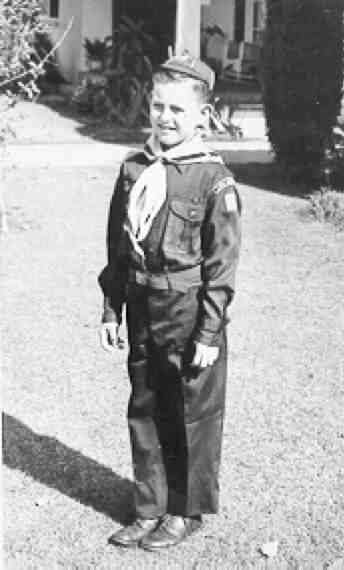
Figure 1.--This American Cub was photographed in his bran new Cub uniform, probably in the 1960s. Notte the lack of piping around the pockets of his long pants. American Cubs until the 1980s were some of the few to wear long pants.

Some of the original Boys Brigade uniforms had long trousers. Few subsequent boys' uniformed groups, however, had long pants as part of the uniform. There were some exceptions to this. The Hitler Youth had a long pants winter uniform. I'm unsure about the Young Pioneers in Russia, but I don't think a uniform was as widely worn by the Pioneers as the Scouts. Long pants became much more common beginning in the 1940s when American Scouts and Cubs were allowed to wear long pants. The Ameican Scouts made shorts or longs optional. British Scouts, however, adopted long pants as the uniform standard. Since then long pants have gradually been adopted by many Scout groups in countries around the world. One option that appeared in the 1990s was long sweatpants often paired with sweat shirts.
Both knickers and long pants were widely worn by British boys joining the Boys Brigade and similar organizations in the late 19th Century. HBU is not sure just what the reguklatiions were in these early groups. The Scouts uniforms adopted in the 1900s and 1910s included short pants, or in America knickers. Long pants were not worn until authorized for American Scouts in the 1940s. One of the few exceptions were German boys in the 1930s, as the Hitler Youth had a winter long pants uniform. Although American Scouts and Cubs began wearing long pants in the 1940s, few other country groups authorized long pants until the British Scouts in 1969 adopted a long pants uniform. Most other Scouts still wore short pants in the 1979s, but gradually in he 1980s and 90s, long pants have become more common.
Some organizations--primarily Scouts--made the type of pants a seasonal matter with boys wearing short pants in the Summer and long pants in the winter. This is, for example, the general pattern in America, although the policy is left up to each Scout troop.
Differet boys uniformed groups have had various policies about pants styles which have varied over time.Thee Scout groups established in the 1900s and 1910s around the world and most groups established in the 1920s, like the Italian Baillal and Hitler Youth, adopted short pants uniforms. American Scouts, the largest Scout association, however, mostly wore knickers as this was the most common dress for American boys. American Scouts wore knickers until the 1940s when long pants were adopted. HBU knows of no other important uniformed group, other than American Scouts and Cubs, that had a knickers uniform.
American Scouts mostly wore below-the-knee knickers. Some mothers in the 191os preferred the above-the-knee knicker style and some Scouts wore their knickers above the knee for formal photographs at home. Most boys, however, wore their kinickers buckled below the knee. I am not sure about Scout regulations, but it does not appear that official uniform pants were ever made in the above-the-knee style. The style of above the knee knickers was still worn in the early 1920s, but was little seen by 1925. By the mid 1920s almost all boys were wearing their knickers bucked below the knee. As Cubbing did not begin in America until the 1930, they also wore below the knee knickers.
HBU at this time only knows of knickers being worn by uniformed youth groups in America. Small groups in other countries may have also worn knickers, but HBU at this time does not now have details.
Amerucan boys wearing knickers commonly wore them with kneesocks which were the only official hosiery. Some boys in the 1910s appear to be wearing their knickers with long stovkings, but kneesocks were the only authorized hosiery. The Cubs who were organized in 1930 also wore their knickers with kneesocks. The blue Cub kneesocks had yellow bands at the top. I d not believevthat the Scout khaki kneesocks had these stripes.
Navigate the Historic Boys' Uniform Web Site:
[Return to the Main pamts garment page]
[Introduction]
[Bibliographies]
[Chronologies]
[Contributions]
[FAQs]
[Garments]
[Organizations]
[Boys' Uniform Home]
Navigate the Historic Boys' Uniform Web chronological pages:
[1900s]
[1910s]
[1920s]
[1930s]
[1940s]
[1950s]
[1960s]
[1970s]
[1980s]
[1990s]
[2000s]
